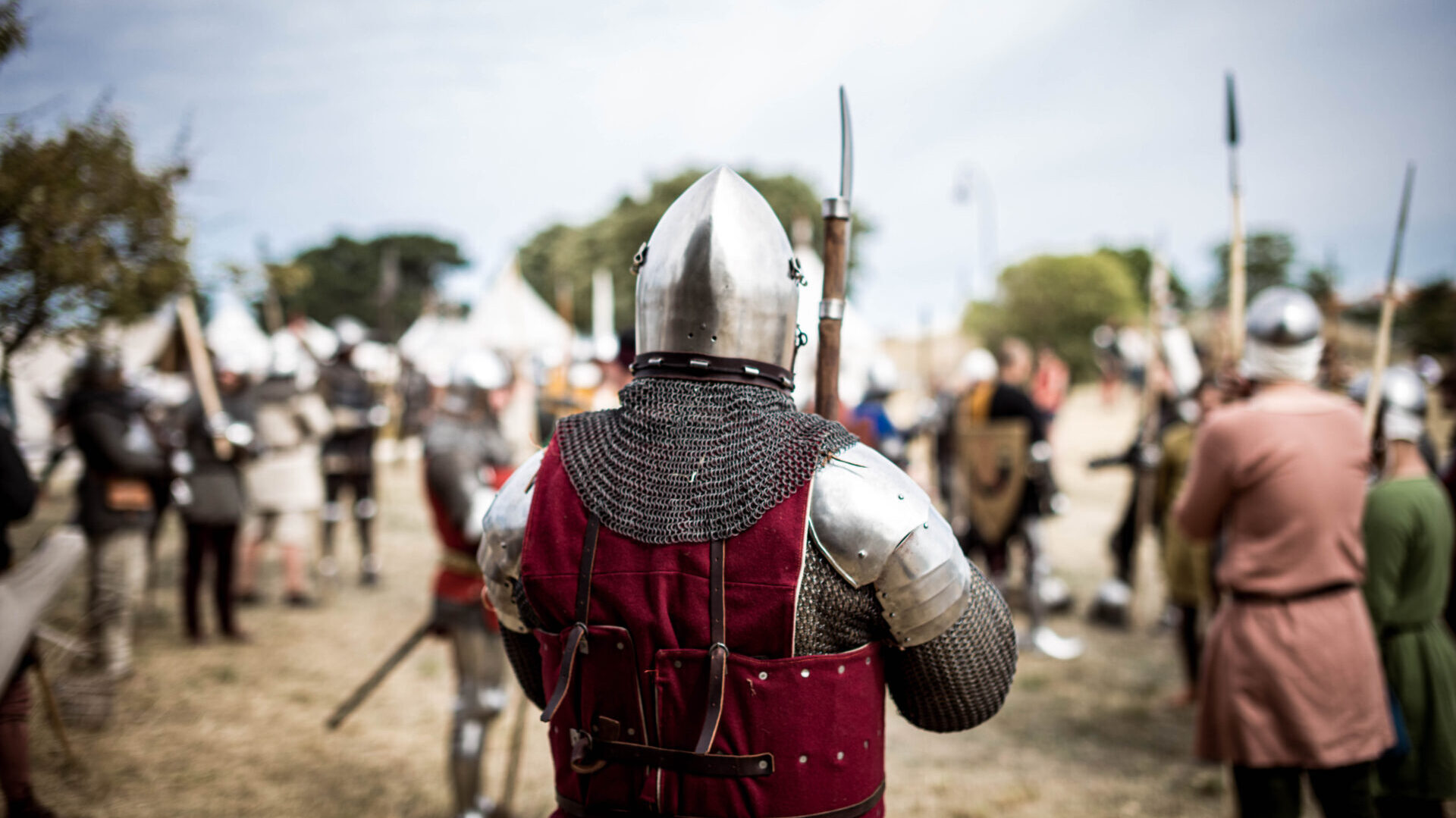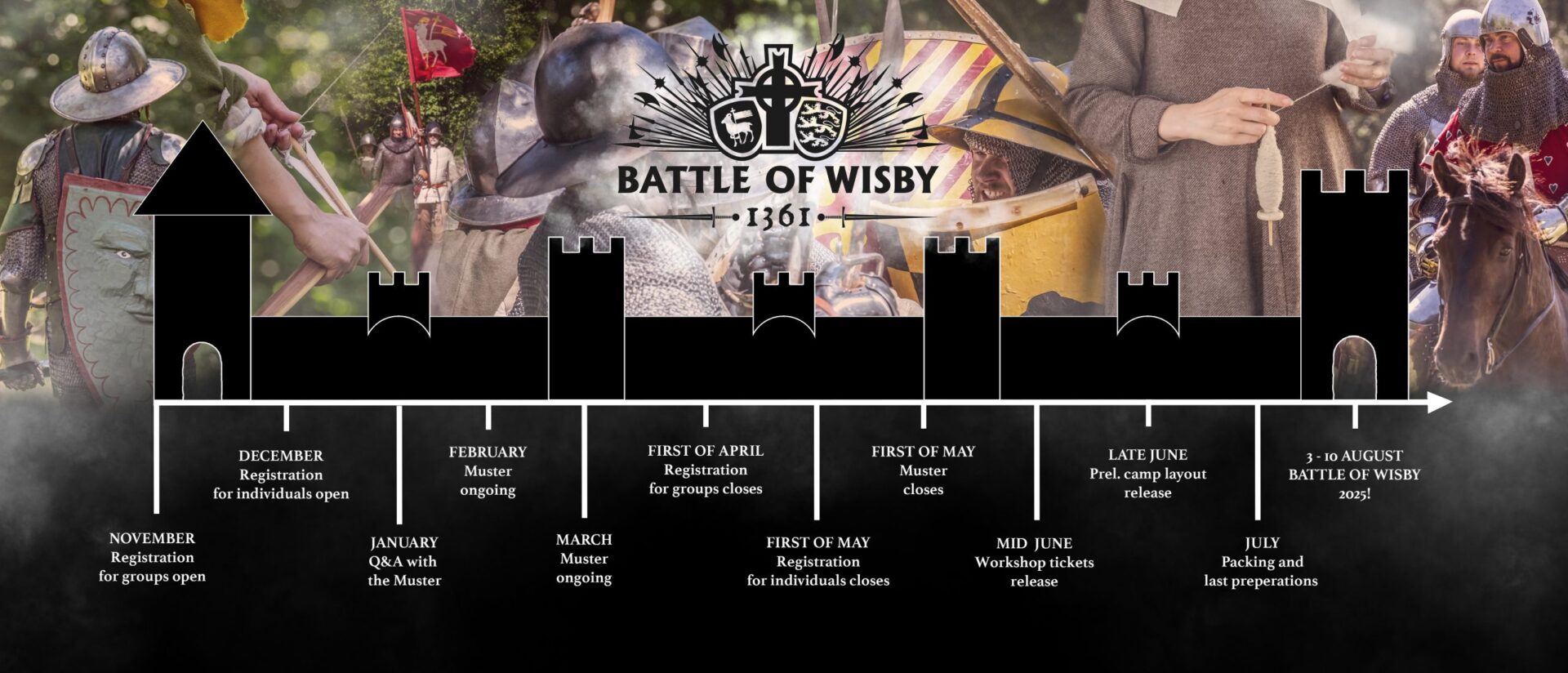
The Battle of Wisby is a Swedish historical reenactment event, commemorating the 1361 Battles of Wisby and Mästerby on the island of Gotland.
The event is arranged by Battle of Wisby in cooperation with the Medieval Week.
We are proud to once again welcome you to the Battle of Wisby: For the 6th time, together with more than 500 participants from more than 15 countries, we will organize the reenactment of the Danish invasion of Gotland A.D. 1361. Please join us in the UNESCO World Heritage site of the Hanseatic Visby, August 3-10 2025.
The 6th re-enactment of the Battle of Wisby will take place on August 9, 2025 in Östergravar in Visby. Together with more than 500 participants from more than 15 countries, the Danish invasion will be recreated.
Entrance tickets for Adults cost 195 SEK, youth, pensioners and students aged 16-20 cost 98 SEK, children aged 7-15 cost 78 SEK , and children under 7 years have free entrance.
The Registration for Groups and Individuals is closed for 2025
Besides the battles, which are full-scale public events presenting infantry, cavalry, archers and many other features, the event includes participant workshops, lectures, tournaments, and a bustling Medieval camp where visitors can get a glimpse of daily life in the past.
The Battle of Mästerby will take place on Thursday the 7th of August 2025 in Mästerby, Gotland, and the Battle of Wisby will take place Saturday the 9th of August 2025 in Östergravar, Visby.
Read more about the battle and conditions for participating here!
Valete amici, et ora pro nobis!
